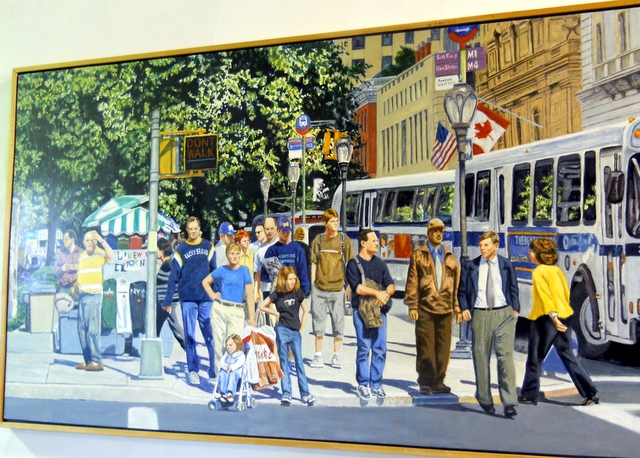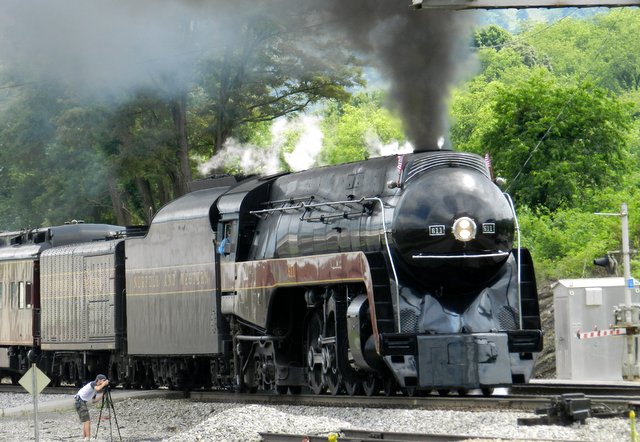My community is not what one might call completely devoid of art, but I don't consider Roanoke to be a pinnacle of it, either. We have the Taubman Museum of Art, which I visit on occasion, and Hollins University has a museum that I enjoy. There are a few other smaller art museums around, too.
We also have some fine local artists. I have the work of some of them hanging in my home, as I like to support them. I especially like renderings of Botetourt or other landscapes. Some of my artist friends deal more in fantasy or expressionism, and I like their work as well. Just as I like to read in many genres, I enjoy many different kinds of art.
 |
| Painting by Fincastle artist Ed Bordett |
I took a few art classes under
Nancy Dahlstrom at Hollins. She is one of our local artists and currently has a show at the
Eleanor D. Wilson Museum on campus through February 21. I am hoping to get by to see it.
Nancy was a great teacher. Instead of telling me that I couldn't draw (I can't), she would say something like, "That's a great line right there." But even I could see that my talent for visual artwork was lacking.
While I consider myself a creative person, my creativity tends to lie in my thinking and not so much in my doing. I have attempted needlework in the past, and done okay. But I am not very good at crafty things, or folk art, or anything like that.
 |
Wood turnings by local
artist Willie Simmons |
Sometimes I think I need to try different mediums. Pottery has appeal; I rather like the idea of getting dirty and throwing mud at something. When I was very young I had a rock tumbler that shined up stones, and I remember I liked that very much. I'm not sure what one does with shiny stones, though.
So while I enjoy arts and crafts, and love seeing the work of others, I feel quite inept in this area.
 |
One of my photos
|
I do take decent photos, and perhaps there is where I should look for improvement. I have not trained in photography, so I feel I could take even better pictures with a few courses. I have read books about it and I took a class in the 1980s, so long ago that I barely remember it. Of course that was using film cameras, not digital.
I know just enough about design to be dangerous and to realize that taking a step in one direction or the other can make all the difference in a shot. But most of the time, I think my photography turns out well simply through luck. That, and the fact that I have always, even when I was using film, taken more than one shot of something, trying various angles to get the better view.
One of the things I would like to do is create something with my photos to sell. Notecards come to mind, but I am stymied by the process. I am not good at graphic design on the computer or making changes to tweak the pictures. I don't have software that "makes" cards. They also need to be professionally printed, I think.
I suffer from "not good enough" syndrome, however one might define that, and while I have sold enough pictures to newspapers and magazines to be considered a professional photographer, I certainly do not consider myself to be one.
At the moment, I have 29,786 images on my computer, dating as far back as 2011. So I take a lot of photos, almost 10,000 a year. Occasionally I go through and delete duplicates, or try to. After all, who needs 20 pictures of the same doe in the front yard? Apparently I do, since I take so many. It comes from trying to be perfect, I suppose.
 |
One of my 1,000s of deer
pictures. |
How do you feel about art, dear reader? Is it a part of your life? I feel like art is something that is dying as we focus more of our efforts on making money. Artists have lost their patrons and thus have had to become entrepreneurs. I fear many create what sells instead of what their heart tells them. Art should illustrate our lives and make statements. It can be a force for change, even, or a conveyor of messages, political, religious, or otherwise. Art is not respected by many, and people who want to become artists (or writers) are often considered flighty or otherwise not exactly normal by the masses.
Yet artists are also envied, because they live a life closer to the soul than most of us. They have to look inward, be introspective, and consider the many different perspectives available to them as they begin a project. They have to be self-starters or their work would never be started, much less completed. I think there is something in the artist that we all admire, however secretly. Perhaps we even covet that lifestyle, that freedom to create and be a creator.
I like art. I hope to make more visits to the local museums this year.












































